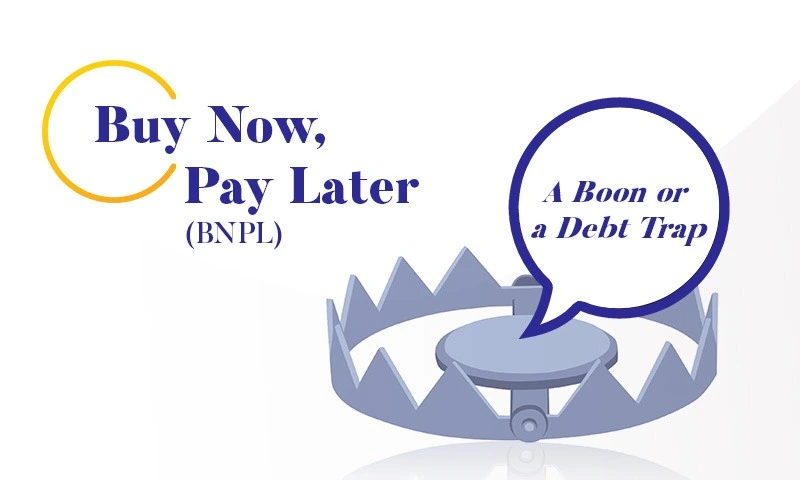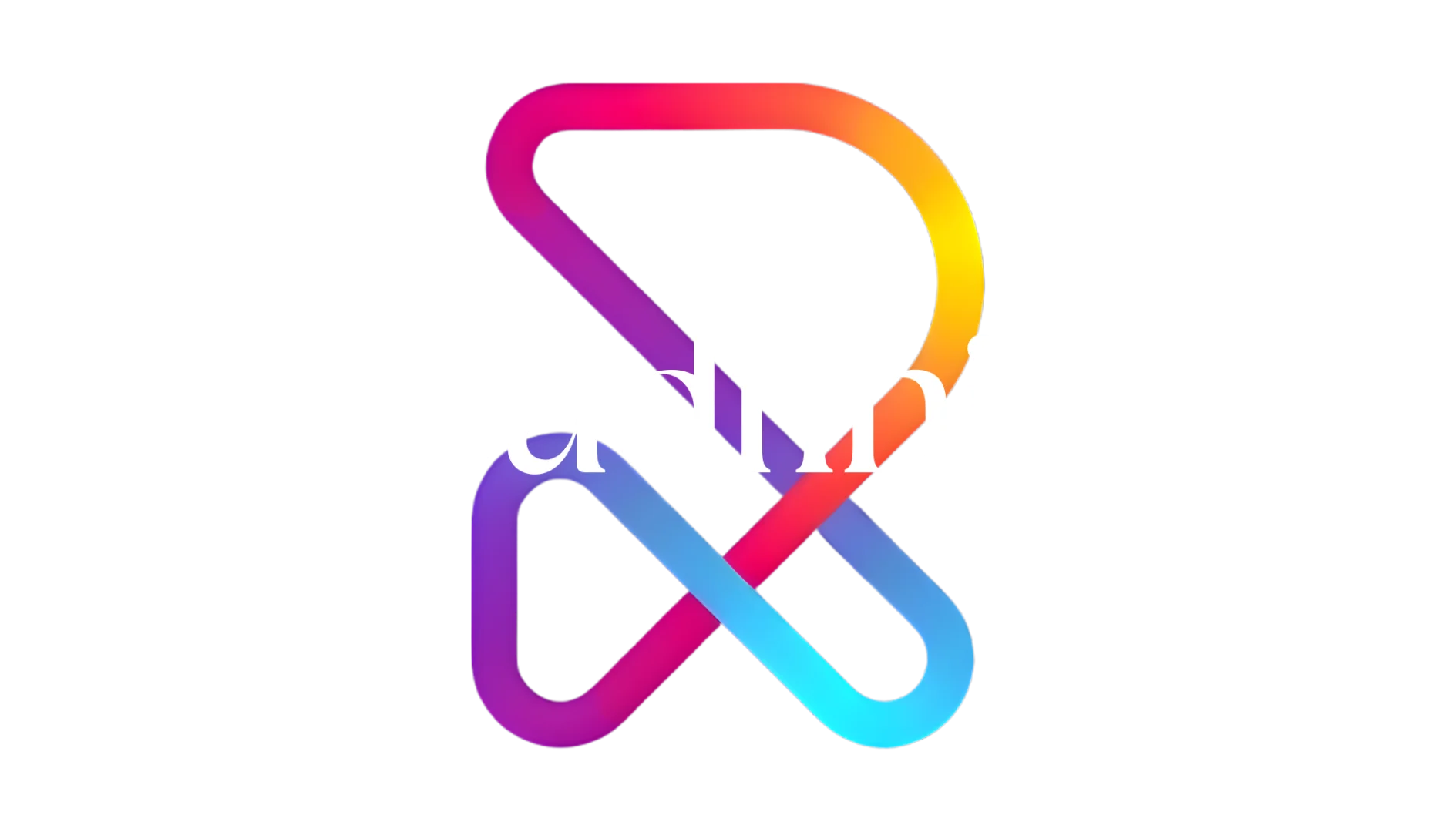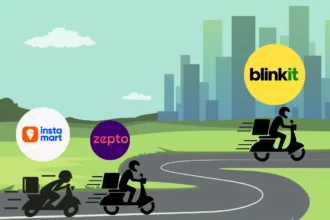Estimated Reading Time: 22-26 minutes ( 4,563 words)
Introduction
BNPL — or Buy Now, Pay Later — has completely reshaped the way people shop, budget, and even think about money. What started as a niche fintech feature is now everywhere: Amazon Pay Later, ZestMoney, Simpl, LazyPay, Apple Pay Later, Klarna, Afterpay, Affirm — you name it. Whether you’re ordering sneakers on Myntra, groceries on Blinkit, or a new iPhone, the option to “split the payment” pops up almost instantly.
In India especially, BNPL has exploded thanks to a young, digital-first population that prefers convenience over paperwork and has historically been underserved by traditional banks and credit cards. With approval in minutes and no collateral or long forms, BNPL feels like the modern upgrade of credit — fast, frictionless, and surprisingly addictive.
But with its skyrocketing popularity comes a tough question:
Is BNPL truly empowering consumers with flexible finance — or quietly nudging them into a cycle of invisible debt?
In this deep-dive guide, we’ll break down global and Indian BNPL trends, real user behaviour, the psychological triggers that make BNPL so tempting, the risks many shoppers overlook, RBI regulations shaping the future, and how you can use BNPL smartly without becoming its next cautionary tale.

What Is BNPL & How It Works
BNPL (Buy Now, Pay Later) is a short-term credit option that allows you to purchase something today and split the payment into small installments over time — usually 3, 6, or sometimes 12 months. For many consumers, it feels like a smoother, faster, and more flexible alternative to traditional credit cards.
Here’s how it typically works:
- You select a BNPL option at checkout (online or offline).
- You pay a small upfront amount (or sometimes ₹0 down payment).
- The remaining installments auto-debit from your UPI, bank account, card, or wallet.
- If paid on time, many BNPL plans charge zero interest, making them extremely appealing.
Behind the scenes, the BNPL company settles the full amount with the merchant instantly, while you repay them gradually. This “instant gratification, delayed payment” model is exactly why BNPL has become so popular among young shoppers.
BNPL Models
BNPL isn’t one single product — it comes in several formats. Here are the most common models used globally and in India:
1. Zero-Cost EMIs (Merchant Absorbs the Interest)
- Popular on Amazon, Flipkart, Croma, and Apple stores
- You pay only the divided installments
- Merchants pay the interest as part of their marketing/promotional cost
- Great for high-ticket items (phones, laptops, appliances)
2. Short-Term Pay-Later (7–30 Days, No Cost)
- Used for groceries, food delivery, medicine, travel tickets
- Offered by Simpl, LazyPay, PostPe, Paytm Postpaid
- Works like a “monthly bill” that you clear all at once
- No interest if paid before the due date
3. Longer-Tenure BNPL (3–12 Months With Interest)
- Offered by ZestMoney, Kissht, KreditBee, etc.
- Used for large purchases like electronics, furniture, education fees
- Interest rates vary (typically 12–24% annually)
- Functions similar to a personal loan but with quicker approval
4. Subscription-Style BNPL (Travel, Phones, Healthcare, Rent)
- Used for recurring or high-cost services
- Examples:
- Travel BNPL (MakeMyTrip, Cleartrip tie-ups)
- Healthcare BNPL (Pristyn Care, Practo)
- Smartphone subscription upgrades
- Rent payment credit through apps like CRED or Slice (earlier)
- Travel BNPL (MakeMyTrip, Cleartrip tie-ups)
- Often includes service fees, convenience charges, or interest
BNPL Market Overview (Global + India)
Global Market
The BNPL industry has evolved from a niche fintech product into a mainstream payment method used across retail, travel, healthcare, and even B2B purchases. As consumer credit preferences shift toward flexible, low-friction financing, BNPL adoption continues to surge across Europe, the US, Australia, and emerging markets.
Key global trends:
- Massive GMV Growth:
Leading research firms estimate global BNPL Gross Merchandise Value (GMV) in the hundreds of billions of dollars through the mid-2020s.
Most base-case forecasts suggest the BNPL market could reach USD ~900+ billion by 2030, driven by e-commerce expansion, cross-border shopping, and fintech–bank partnerships. - Explosive Adoption by Younger Consumers:
Gen Z and Millennials form the bulk of BNPL users globally.
Their top spending categories:
- Fashion & beauty
- Electronics
- Travel & experiences
- Food delivery & quick commerce
- Online marketplaces
- Fashion & beauty
- Shift Toward Everyday Essentials:
Markets like the US, Australia, and the UK are seeing BNPL for groceries, fuel, medical bills, and utilities — showing how deeply it’s integrated into daily finances. - Platform Ecosystem Expansion:
Big players like Klarna, Afterpay, Affirm, PayPal Pay Later, Apple Pay Later continue expanding into:
- in-store POS
- subscription financing
- travel bookings
- credit-building tools
- loyalty rewards
- in-store POS
- Regulation Tightening:
Countries like the UK, EU, Australia, and US are implementing stricter checks on affordability, disclosures, and delinquencies — signaling a maturing industry.
Indian Market
India is considered one of the fastest-growing BNPL markets in the world, thanks to a young population, rapid digitization, and the dominance of UPI.
Key growth signals:
- Explosive GMV Surge:
India’s BNPL GMV is estimated to have reached USD 15–30 billion in 2024–2025, depending on the market segment (pay-later vs EMI-based BNPL). - 2030 Market Potential:
Multiple fintech and consulting reports project India’s BNPL GMV to grow to USD 45–80+ billion by 2030, depending on:
- RBI regulatory direction
- fintech–NBFC partnerships
- merchant adoption
- credit bureau integration
- RBI regulatory direction
- Demand Is Driven by Credit-Starved Youth:
Over 70% of Indian BNPL users are under 35, and many do not qualify for traditional credit cards.
BNPL fills this gap with instant approvals and minimal documentation. - UPI as the Backbone:
The availability of UPI autopay, recurring payments, and e-mandates has powered frictionless installment collections — making BNPL scalable and safer. - Key Players:
- Pay Later: Simpl, LazyPay, Amazon Pay Later, Flipkart Pay Later
- BNPL Loans: ZestMoney, KreditBee, Slice (earlier model), Axio
- Banking Partnerships: ICICI PayLater, HDFC FlexiPay, SBI PayLater models emerging
- Pay Later: Simpl, LazyPay, Amazon Pay Later, Flipkart Pay Later
- Merchant Acceptance Rising:
BNPL is now common across:
- e-commerce
- grocery & quick commerce
- travel
- electronics
- edtech
- healthcare
- rent & bill payments
- e-commerce
Shift to Responsible Lending:
After RBI’s tighter regulation in 2023–2024, fintechs are now partnering more closely with NBFCs and banks, improving credit reporting, KYC, and risk checks.
Latest 2025 Stats & Key Players
The BNPL ecosystem in 2025 is more mature, more regulated, and more competitive than ever. Both global and Indian players are expanding beyond e-commerce into travel, healthcare, rent, and offline retail — while regulators push for better customer protection and credit reporting.
Below is a detailed breakdown of top players, performance trends, and emerging risks in 2025.
Top Global BNPL Players (2025)
1. Klarna
- One of the world’s largest BNPL providers.
- Reported improving delinquency trends due to tighter underwriting and real-time risk scoring.
- Expanded into AI-powered shopping recommendations and integrated financial management tools.
- Now offers subscription management, short-term loans, and merchant analytics.
2. Afterpay (Owned by Block, Inc.)
- Strong presence in the US, Australia, UK.
- Focuses on interest-free installments for young shoppers.
- Deep integration with Square’s merchant ecosystem gives it strong offline retail presence.
- Reports indicate Afterpay is pushing into recurring payments and loyalty-driven rewards.
3. Affirm
- Known for transparent pricing — no hidden fees, no late fees.
- Popular for high-ticket categories like electronics, travel, home goods.
- Expanded partnerships with Amazon, Walmart, and major travel portals.
- Growing adoption in subscription markets (fitness, home equipment, software).
4. PayPal Pay-in-4
- Leverages PayPal’s 400M+ global user base.
- Offers short-term, zero-interest installments integrated across millions of merchants.
- Strengthened consumer protection features in 2024–2025 due to US regulatory guidelines.
- Major player in Europe and the US, especially among casual, low-ticket shoppers.
Top Indian BNPL Players (2025)
India’s BNPL ecosystem is divided into pay-later billing, BNPL EMIs, and co-branded bank partnerships. RBI scrutiny has slowed down aggressive expansion but improved safety and compliance.
1. Bajaj Finserv EMI Network
- India’s largest EMI-based credit ecosystem (online + offline).
- Dominates high-ticket finance: electronics, appliances, healthcare, lifestyle.
- Deep merchant network of 1 lakh+ stores.
- Acts like India’s oldest version of BNPL.
2. Paytm Postpaid
- Massive adoption through Paytm’s wallet + UPI ecosystem.
- Used for utility bills, mobile recharge, travel bookings, food, and offline QR payments.
- Typical limits range from ₹1,000 to ₹60,000+.
- Works like a monthly credit cycle with fixed due dates.
3. LazyPay
- One of the largest short-term BNPL providers.
- Offers “Pay in 30 Days” or “Pay in 3” options.
- Popular for food delivery, quick commerce, online shopping.
- Has expanded into small-ticket loans under NBFC partnerships.
4. Slice
- Transitioned from card-based credit to a regulated NBFC product.
- Offers pay-later credit, small-ticket EMIs, and UPI-linked credit.
- Strong adoption among students and gig workers.
5. Simpl
- “1-tap checkout” model for merchants + monthly pay-later billing.
- Extremely popular for groceries, D2C brands, food delivery.
- Faced RBI scrutiny in 2024 around payment aggregator licensing, leading to operational resets.
- Continues to grow with improved compliance and underwriting.
Credit Risk Indicators (2025)
Despite BNPL’s convenience and rapid adoption, its risk profile has come under increasing regulatory and consumer protection focus. Key trends:
1. Rising Missed Payments
- Global surveys show a meaningful percentage of BNPL users have missed at least one payment in the last 12–24 months.
- BNPL late-payment fees, although small individually, can stack up quickly.
2. Younger Users Show Higher Stress
- Gen Z and younger millennials tend to use BNPL across multiple apps simultaneously — often without fully tracking installment schedules.
- Behavioral research finds many underestimate their total liabilities.
3. Multi-BNPL Usage Risk
- A growing number of shoppers use 3–6 different BNPL platforms at once, creating “hidden debt” not always captured in traditional credit bureau checks.
- Regulators globally are pushing for centralized reporting for this reason.
4. Macroeconomic Sensitivity
- BNPL delinquencies rise faster during inflationary pressure or job market stress.
- India’s young workforce — gig workers, freelancers, freshers — is especially vulnerable.
5. RBI, FCA, ASIC & EU Warning Signals
- Reserve Bank of India, UK’s Financial Conduct Authority (FCA), Australia’s ASIC, and the EU have highlighted BNPL-linked overspending as an emerging issue.
- All are moving toward stricter:
- affordability checks
- credit bureau reporting
- fee transparency
- data security rules
- affordability checks
Why BNPL Became So Popular (India-First View)
BNPL didn’t just grow — it exploded, especially in India. The Indian digital ecosystem, young population, and the psychological appeal of “buy now, pay later” created the perfect storm. Here are the biggest drivers behind its rise:
1. Zero Paperwork & Instant Approval
India’s fintech stack gives BNPL players a massive advantage:
- Aadhaar-based eKYC,
- UPI autopay, and
- instant digital underwriting
Together, they make BNPL approvals as fast as 30–90 seconds. No bank visits. No income documents. No long forms.
This convenience makes BNPL feel like a natural extension of online shopping.
Why it matters:
In a country where most consumers dislike traditional paperwork and delays, BNPL’s frictionless onboarding is a game-changer.
2. India’s Credit-Starved Population
India has one of the lowest formal credit penetrations among major economies.
- Only ~4% of Indians hold a credit card.
- Millions of salaried workers, students, and gig workers are still “new to credit.”
BNPL fills this massive gap by offering:
- Instant small-ticket credit
- No collateral
- Flexible limits (₹1,000 to ₹100,000+)
For many young Indians, BNPL becomes their first-ever credit product, making it extremely attractive.
3. Millennials & Gen Z Prefer Cashflow-Friendly Payments
Younger consumers prioritize cash flow management over traditional saving-first behavior.
BNPL fits perfectly because:
- Small EMIs feel psychologically lighter than one-time payments.
- Paying later gives a sense of financial breathing room.
- Big purchases (phones, gadgets, fashion, travel) feel more accessible.
Behavioral economists note that BNPL triggers the “pain of paying” after consumption — which increases impulse purchases.
4. E-Commerce Platforms Aggressively Push BNPL
For online retailers, BNPL is not a convenience feature — it’s a revenue booster. Merchants love BNPL because it:
- Increases conversion rates (customers are less likely to abandon carts)
- Grows Average Order Value (AOV) by 20–40% globally
- Drives higher repeat orders
- Helps sell high-ticket items like phones, laptops, appliances
This is why Amazon, Flipkart, Myntra, Croma, and thousands of D2C brands actively promote Pay Later and 0-cost EMI options.
Platforms win. Merchants win. Consumers think they win — and that’s exactly why BNPL spreads fast.
The Hidden Costs of BNPL: What Most Users Miss
BNPL looks simple on the outside — “split your payment, no fees.” But behind the convenience is a complex credit system that most users don’t fully understand. These hidden risks often catch people off-guard and can quietly push them into financial stress.
1. Late Fees & Penalties
BNPL companies make a significant portion of revenue from missed payments.
If you miss even one installment, it can lead to:
- Flat late fees (₹100–₹500 depending on platform)
- Penalty interest on the outstanding amount
- Suspension of Pay Later access
- Credit score drops (most BNPLs now report to bureaus)
- Additional “reactivation” or “collection” charges
Because installments auto-debit through UPI or cards, even a small bank balance mismatch can trigger fees — something many users don’t anticipate.

2. Stacking Multiple BNPL Plans (Invisible Debt Trap)
A rising problem in India and globally is BNPL stacking — users taking loans from:
- Amazon Pay Later
- Flipkart Pay Later
- LazyPay
- Simpl
- Slice
- Paytm Postpaid
- KreditBee/ZestMoney
- Bank PayLater schemes
… all at the same time, without each platform seeing the full picture.
This leads to:
- Invisible debt accumulation
- Overestimation of affordability
- Multiple due dates = higher chance of missing payments
- Stress when all bills hit at once
- “Snowballing” late fees that spiral out of control
Regulators in India (RBI) and globally (FCA, ASIC, EU) are concerned about this exact behavior.
3. Lack of Clarity on Interest & Fees
“Zero-cost EMI” can sometimes be a marketing illusion. Even if interest is waived, consumers may still pay:
- Higher product prices baked into the EMI scheme
- Platform convenience fees
- Processing or onboarding fees
- GST on interest/subvention amounts
- Pre-closure charges (select players)
In many cases, merchants cover the interest, but raise the selling price to compensate.
So, the EMI feels free… but the customer indirectly pays for it.
4. Data Privacy Risks
BNPL apps often collect:
- transaction data
- shopping behavior
- repayment history
- location
- device information
- contact lists (in some older models)
The risk?
- Over-profiling for targeted ads
- Credit limit decisions based on behavior tracking
- Cross-app data sharing with lending partners and NBFCs
- Potential misuse if a fintech lacks strong compliance safeguards
RBI has tightened norms, but data misuse remains a real concern, especially with smaller or unregulated BNPL startups.
5. Collection Harassment (Especially During Defaults)
Most BNPLs partner with NBFCs, which have strict recovery guidelines. But when repayments fall behind, users may still face:
- Frequent reminder calls
- Harsh recovery agents
- Social pressure tactics (in extreme cases)
- WhatsApp messages to personal contacts (reported cases with rogue fintechs)
- Threats of account blacklisting or legal notices
While major players follow RBI’s Fair Practices Code, lesser-known fintechs have been flagged for aggressive practices — especially for small-ticket pay-later loans.
Is BNPL a Debt Trap?
BNPL is marketed as a “smart, flexible, interest-free” way to shop — but regulators, researchers, and financial experts warn that it can become risky when misused. Let’s break down what the data actually says.
Here’s what real data shows:
1. Late-Payment Rates Are Higher Than Expected
Multiple global and Indian surveys (2023–2025) reveal that a significant share of BNPL users — especially those under 30 — have missed at least one payment.
Reasons include:
- Multiple apps with different due dates
- Low financial discipline
- Small-ticket impulse purchases
- Salary delays (common among gig workers)
Internationally, companies like Klarna and Afterpay have reported that late fees still make up a meaningful portion of revenue — indicating repayment stress.
2. Defaults Spike During Economic Pressure
Economic slowdowns, job layoffs, rising living costs, and inflation increase BNPL delinquency rates.
BNPL is uniquely vulnerable because buyers often finance:
- fashion
- electronics
- food delivery
- discretionary spending
These purchases don’t hold value, so during stress, users prioritize essential bills over BNPL repayments.
3. Global Regulators Are Stepping In
Countries like the US, UK, Australia, and EU nations have publicly flagged BNPL as a potential consumer risk.
Key concerns include:
- Lack of standardized affordability checks
- Hidden fees
- Overspending
- Poor transparency on terms
- Young borrowers being disproportionately impacted
Result:
Many regulators now require BNPL to follow credit bureau reporting, clearer disclosures, and responsible lending rules.
4. India: RBI Tightens The Screws
The Reserve Bank of India has taken a firm stance on digital lending and BNPL models. Key actions include:
- Stricter eKYC requirements
- Limits on credit lines loaded onto prepaid instruments
- Push for more transparent credit reporting
- Restrictions on unauthorized payment flows
- Ensuring NBFC partners follow fair lending practices
This heightened oversight has already forced major BNPL players to revise their business models.
Conclusion: Is BNPL a Debt Trap?
BNPL isn’t inherently a debt trap — it’s a payment tool.
But it can easily become one when misused or misunderstood.
You’re at risk if any of these apply:
BNPL Becomes a Debt Trap When:
- You take 3–6 BNPL loans simultaneously across multiple apps.
- You use BNPL for non-essential or impulse purchases (fashion, food delivery, gadgets).
- You have irregular income, freelance work, or inconsistent salaries.
- You don’t track due dates — leading to stacked late fees.
- Platforms give inflated credit limits that exceed your repayment capacity.
- You rely on BNPL as your primary spending method, rather than as a convenience tool.
Financial experts agree:
BNPL is safe only when used consciously, with budgeting discipline and clear repayment tracking.
BNPL vs Credit Cards vs EMIs — What Should You Choose?
| Feature | BNPL | Credit Card | Traditional EMI |
| Approval | Very easy | Moderate | Moderate |
| Interest | 0% (short-term) | 18–42% APR | 12–20% |
| Late Fees | High | Moderate | Moderate |
| Credit Score Impact | Increasingly yes | Yes | Yes |
| Ideal For | Small purchases, cashflow | Rewards, large purchases | Big-ticket items |
Verdict:
- Use BNPL for small, planned purchases.
- Use credit cards for rewards & full-month cashflow.
- Use EMIs for big-ticket items or stable repayments.
RBI Regulations & Policy Changes (India)
The RBI has introduced:
- Digital Lending Guidelines (KYC, disclosures, transparency).
- Crackdown on unregulated payment activities (example: Simpl order).
- Emphasis on NBFC partnerships, compliant credit underwriting.
More rules are expected around:
- Consumer communication
- Credit bureau reporting
- Affordability checks
How to Use BNPL Safely: A Step-by-Step Guide
Step 1: Use BNPL only for essential or pre-planned purchases
Reserve BNPL for items you already intended to buy — such as appliances, education-related expenses, or urgent needs. Avoid using it as a quick fix for impulse-driven shopping or lifestyle upgrades you can’t fully afford yet.
Step 2: Limit yourself to a maximum of 1–2 active BNPL plans
Most users who land in trouble are juggling 4–6 BNPL loans without realizing their combined monthly burden. Keeping your exposure capped at two ensures better control, fewer surprises, and lower credit risk.
Step 3: Track due dates using a calendar, reminders, or a budgeting app
Treat BNPL like a real loan. Set multiple reminders 2–3 days before the due date. Delays — even a day — can cause penalties, auto-debit failures, and score drops. Apps like Walnut, CRED, or Google Calendar alerts help avoid slip-ups.
Step 4: Prefer BNPL providers backed by regulated NBFCs or banks
Platforms tied to regulated financial institutions follow RBI norms on lending, KYC, disclosure, and collections. This reduces the risk of hidden charges, predatory terms, and aggressive recovery practices common among unregulated fintech lenders.
Step 5: Check if “zero-cost EMI” is actually zero-cost
Some merchants silently increase the base price to absorb interest or processing fees. Compare the BNPL price with:
- upfront price,
- standard EMI price,
- and competitor prices.
If BNPL costs more overall, skip it.
Step 6: Make sure your payment method stays active and funded
If you rely on UPI AutoPay or debit card auto-debits, ensure your account has sufficient balance on due dates. Auto-debit failures not only trigger penalties but also harm your credit profile over time.
Step 7: Monitor your credit score every month
BNPL repayment behavior is increasingly reported to credit bureaus (CIBIL, Experian, CRIF). A sudden drop can signal missed payments or over-leveraging. Regular checks help catch issues early and maintain your long-term loan eligibility.
Case Studies
Case Study 1 — India (Overspending Trap)
Rohan, a 24-year-old engineer in Bangalore, used 5 BNPL apps simultaneously. Small purchases (₹499–₹1,499) added up to ₹14,000 monthly installments. When he missed payments, late fees ballooned to ₹3,000+. His score dropped by 60 points.
Case Study 2 — Global (Klarna)
Klarna reported improving delinquency in mid-2025 due to stronger underwriting — showing how regulation + better risk models reduce defaults.
Key Facts & Stats Box (Quick View)
- Global BNPL GMV (2025 est.): USD ~500B.
- Global 2030 projection: USD ~900B+.
- India BNPL 2025 size: USD 15B–30B.
- India 2030 projection: USD 45B–80B.
- BNPL strongly used by Gen Z & Millennials.
- Surveys show significant late-payment rates among BNPL users.
- RBI enforcing tighter digital-lending norms.
FAQs Section
1. Is BNPL really interest-free?
In many cases, yes — especially for short-term BNPL (Pay-in-15/30 days) and Pay-in-3 or Pay-in-4 models. But the term “interest-free” can be misleading because:
- Merchants often increase product prices to cover the “zero-cost EMI” fee.
- Some apps add processing or convenience fees at checkout.
- You may pay late payment penalties, which can be ₹100–₹500+ per missed payment.
- Some BNPL plans shift to interest-bearing EMIs if you extend the tenure.
Reality: BNPL isn’t always free — the charges are just hidden deeper in the transaction.
2. Does BNPL affect my credit score?
Yes, increasingly so.
Major Indian BNPL players (Bajaj, Paytm Postpaid, Slice, Uni, some UPI-linked BNPLs) have begun reporting repayment behavior to CIBIL, Experian, Equifax, and CRIF.
This has two effects:
- Timely payments → Improve credit score
- Missed payments → Reduce score for up to 24 months
BNPL loans usually count as “consumer durable loans” or “small-ticket credit”, which lenders now closely monitor.
Tip: If you’re planning big loans (home, car, education), keep BNPL usage minimal.
3. Is BNPL better than a credit card?
It depends entirely on your financial habits.
BNPL wins when:
- You need small-ticket, short-term financing.
- You don’t want to deal with paperwork.
- You don’t qualify for a credit card (most Indians don’t — card penetration is ~4%).
- You want predictable installment structures without revolving interest.
Credit cards win when:
- You want travel rewards, points, cashbacks, lounge access, fuel benefits.
- You want flexibility with 0% EMI conversions or longer tenures.
- You routinely repay on time and use rewards effectively.
Bottom line:
BNPL = simple, small, structured
Credit card = powerful, flexible, reward-heavy
Choose based on discipline level.
4. Can BNPL hurt my credit?
Absolutely — and faster than a credit card can.
BNPL becomes harmful when:
- You have many simultaneous loans across merchants or apps.
- You forget due dates (BNPL cycles are shorter than credit cards).
- You default, triggering collection calls or negative bureau reporting.
Because BNPL is short-term credit, any missed payment is quickly flagged, and lenders interpret it as a sign of credit distress.
Tip: Never let BNPL exceed 10–20% of your monthly income.
5. Is BNPL safe for students?
Students are the most at-risk segment. Why?
- They typically lack steady income.
- BNPL is often used for wants, not needs — gadgets, fashion, food delivery.
- Young users underestimate long-term credit consequences.
- A single missed payment may damage their first-ever credit score, affecting future loans or card approvals.
If a student must use BNPL:
- Keep it to one active purchase at a time
- Stick to Pay-in-30 only
- Avoid converting to long-term EMIs
6. What happens if I miss a BNPL payment?
Missed BNPL payments trigger a chain reaction:
Immediate effects:
- Late fees (₹100–₹600 per cycle)
- Account freeze
- Failed auto-debits may add extra charges
Next-level effects:
- Negative reporting to CIBIL/Experian
- Loss of access to other BNPL apps (many check shared bureau data)
Worst-case scenario:
- Strong collection follow-up from agencies
- Threats of legal notices (rare but possible with NBFC-backed apps)
Because BNPL cycles are short, even a 2–5 day delay can be recorded.
7. Will RBI ban BNPL in India?
No — banning BNPL would hurt both consumers and merchants.
However, RBI is tightening the screws to protect borrowers:
Recent or ongoing actions include:
- Restrictions on unregulated digital lenders
- Mandatory KYC & consent-based data sharing
- Crackdown on auto-debit without user approval
- More clarity on credit lines vs. prepaid instruments
- Monitoring of credit limit increases
Expect stricter rules, not bans.
8. Why do merchants push BNPL so aggressively?
Because BNPL directly boosts profits.
Merchant benefits include:
- Higher conversion rates (users buy more often)
- Higher AOV (Average Order Value)
- Reduced cart abandonment
- More repeat purchases
- Easier upselling of high-value items
Globally, merchants report AOV increases of 30–60% after integrating BNPL.BNPL is basically a sales engine disguised as a payment option.
9. Is BNPL cheaper than regular EMIs?
Yes sometimes, especially when:
- The tenure is 1–3 months
- It’s merchant-subsidized (common during sales)
- It’s a “Pay-in-30” zero-cost model
But EMIs may be cheaper when:
- You’re buying high-ticket items (phones, ACs, laptops)
- You qualify for bank-based 0% EMI
- You want 6–24 month tenures
- You avoid processing fees charged by some BNPL apps
Tip: Compare “final payable amount” across payment methods — not just monthly EMI.
10. How many BNPL loans should I have active at the same time?
Financial experts suggest no more than two active BNPL plans.
Why?
- Multiple BNPL loans buried across apps make budgeting harder.
- Debt becomes “invisible,” leading to accidental over-borrowing.
- Lenders see multiple small loans as risk behavior.
- Default risk spikes when repayment dates overlap.
If you find yourself juggling 3+ BNPL plans, you’ve crossed into risky territory.
11. Are BNPL apps safe to use?
Yes — if you choose correctly.
Safe BNPL apps usually have:
- NBCF/bank partnerships (e.g., Bajaj, Paytm Postpaid, Simpl via regulated entities)
- Transparent fee statements
- RBI-compliant KYC
- Clear collection policies
- Data minimization practices
Red flags:
- Aggressive pop-ups pushing limit increases
- Hidden fees
- Confusing repayment schedules
- Excessive data permissions
12. Does BNPL help build credit history?
Yes — when lenders report repayment to bureaus.
This can help:
- Young earners
- First-time borrowers
- Thin-file customers who don’t yet qualify for credit cards
A good BNPL history can boost your credit score, but a bad one harms it twice as fast.
13. Can I prepay my BNPL loan early?
Most BNPL apps allow early or full prepayment without penalties.
Benefits of prepaying:
- Improved credit score
- Lower chance of missing EMIs
- Higher eligibility for future credit
- Cleaner credit utilization ratio
If your BNPL is interest-bearing, prepaying reduces your effective cost of borrowing.
14. Is BNPL available for offline stores?
Yes. Many NBFCs and fintechs now offer offline BNPL at POS, especially for:
- Electronics stores
- Furniture & home appliances
- Mobile and gadget retailers
- Travel outlets
- Dental/healthcare clinics
UPI-linked BNPL will further accelerate offline adoption.
15. Are BNPL approvals easier than credit card approvals?
Yes — drastically.
BNPL uses:
- Simplified risk scores
- Alternative data (spending patterns, payment behavior)
- Quick KYC
- Lower credit limits
This makes BNPL accessible for:
- New-to-credit (NTC) customers
- Students
- Gig workers
- Low-income users
- Thin-file borrowers
Credit cards require higher income, bureau scores, and stable profiles.
Summary
- BNPL is booming globally and in India, driven by young users and ecommerce.
- While convenient, BNPL can hide fees and create silent debt traps.
- Delinquencies are rising; regulators are tightening rules.
- Use BNPL sparingly, choose regulated apps, and track payments carefully.
- BNPL isn’t bad — misuse is.

Conclusion
BNPL has rapidly become one of the most influential financial innovations of the decade, reshaping how people shop, budget, and access short-term credit. For a country like India — where credit card penetration is low, UPI adoption is high, and young digital natives dominate online spending — BNPL fills a long-standing gap in consumer finance. It offers convenience, zero paperwork, instant approvals, and the freedom to break purchases into small, manageable chunks. When used thoughtfully, BNPL can genuinely improve cash flow, help new-to-credit users build a credit footprint, and give consumers access to essential purchases without upfront strain.
But the same features that make BNPL attractive can also make it dangerous. The ease of approvals, short repayment cycles, and ability to stack multiple loans across apps can quietly push users toward hidden debt, late fees, and negative credit scores. Many consumers underestimate the psychological effect of “small EMIs,” and this is where trouble begins — especially during income instability or economic slowdowns. Global regulators, including the RBI, have tightened rules for this reason: they’re seeing rising defaults among younger buyers, as well as the risks of irresponsible lending, data misuse, and overly aggressive collection practices.
The takeaway is simple: BNPL is not inherently good or bad — it’s powerful. Used with discipline, clarity, and limits, it can be a smart tool that enhances financial flexibility and builds credit health. Misused or taken lightly, however, it becomes a modern debt trap disguised as convenience. The responsibility ultimately lies with both sides: platforms must operate transparently and ethically, and consumers must borrow with intention, not impulse.
References & Sources
Citing verified data from:
- Global BNPL forecasts:
- Worldwide market data:
- India BNPL projections:
- Regulatory updates:
- Enforcement example (Simpl):
- Gen Z BNPL adoption:
- Klarna delinquency improvement:
- Consumer late-payment surveys:







